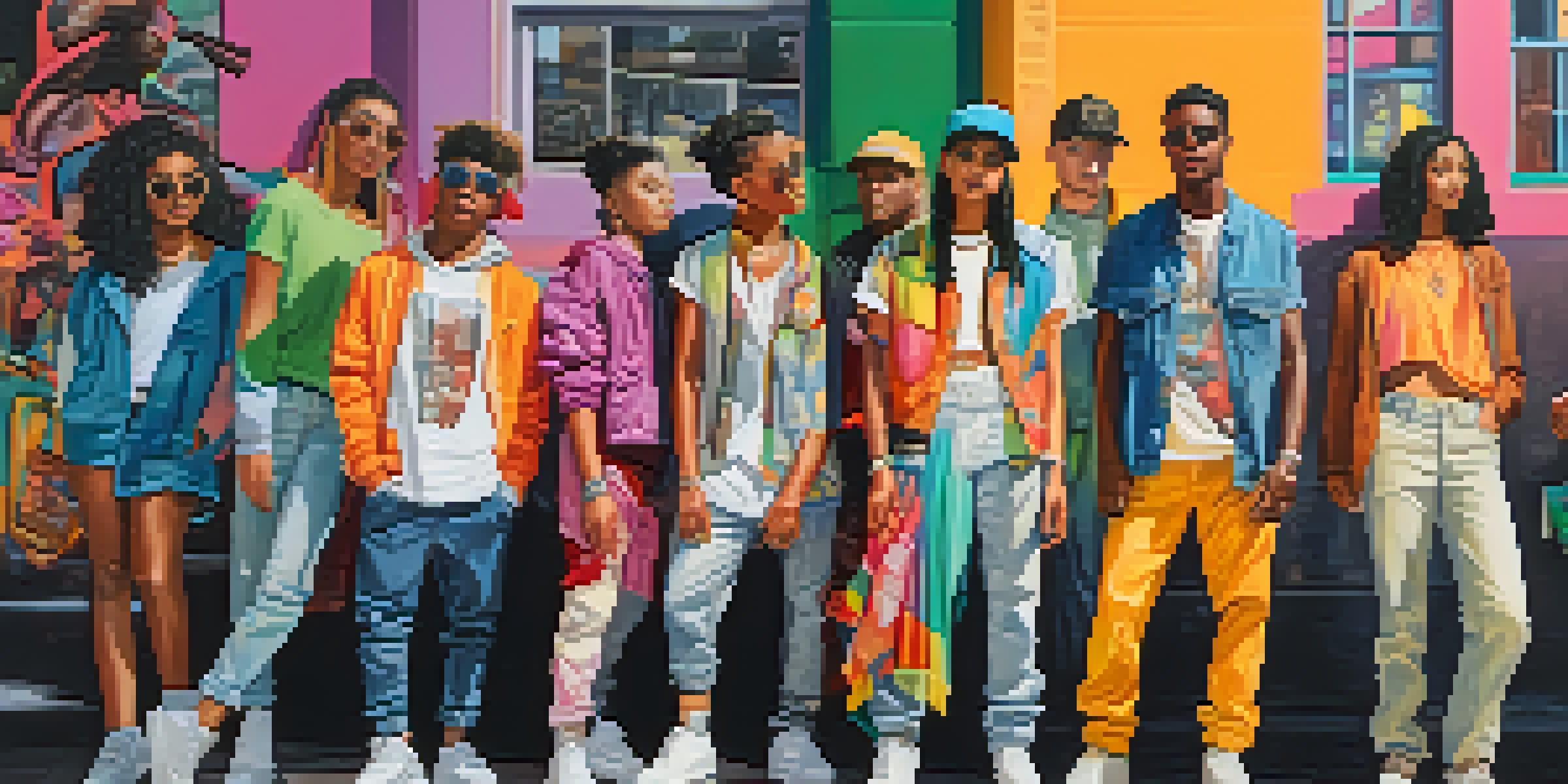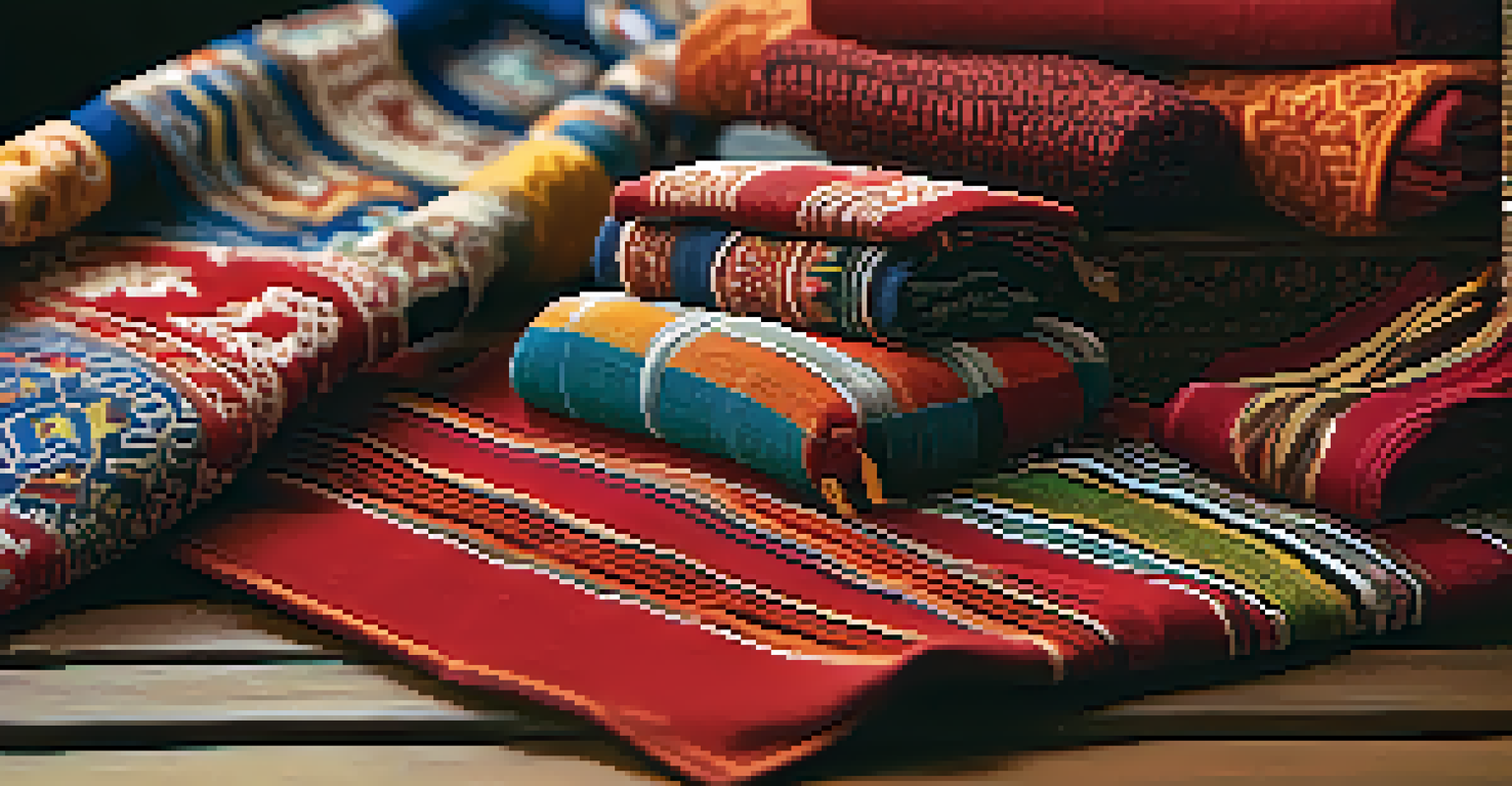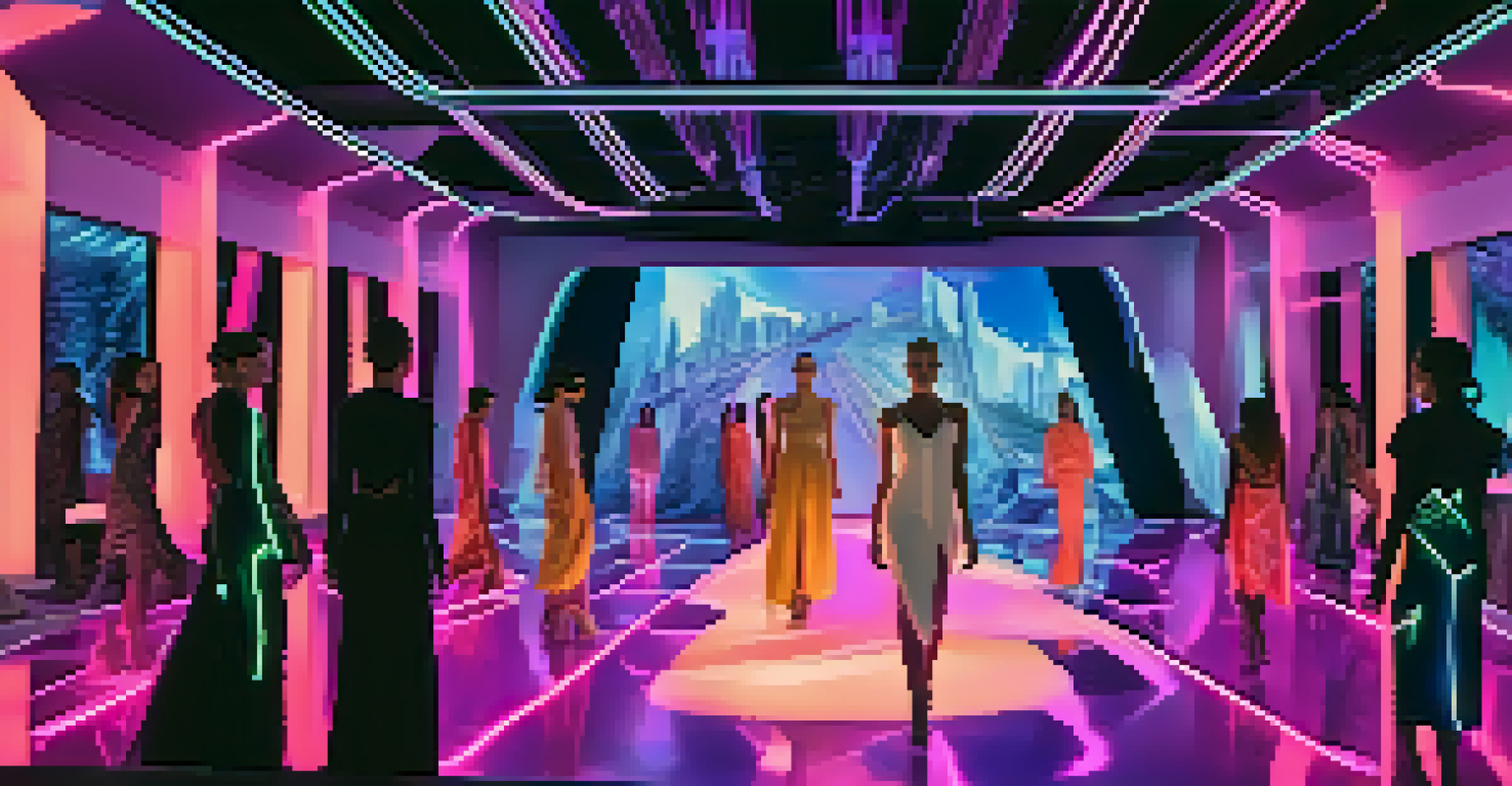Fashion's Role in Shaping Cultural Narratives and Identities

Fashion as a Reflection of Cultural Values and Beliefs
Fashion often acts as a mirror, reflecting the values and beliefs of a culture. For instance, traditional garments can signify historical significance, while modern styles may convey progressive ideas. Through fashion, societies express what they hold dear, from modesty to rebellion, showcasing the spectrum of human experience.
Fashion is the armor to survive the reality of everyday life.
Consider how the adoption of denim jeans in various cultures illustrates this point. Originally a symbol of labor and ruggedness in the American West, jeans have transcended their roots to become a global fashion staple. This evolution captures changing cultural narratives and how they adapt over time.
Fashion not only reflects culture but also shapes it, influencing how individuals perceive themselves and their communities. As people adopt styles that resonate with their identity, they contribute to a larger narrative about who they are and where they belong.
The Role of Fashion in Identity Formation
Fashion plays a pivotal role in how individuals form and express their identities. From teenagers to professionals, clothing choices can signify social status, group affiliation, or personal beliefs. For example, wearing vintage clothing may connect someone to a particular subculture, allowing them to express authenticity.

This connection between fashion and identity is particularly prominent in youth culture, where trends shift rapidly. Young people often use fashion as a way to differentiate themselves from their peers or align with specific movements, such as eco-consciousness or gender fluidity. This dynamic reinforces the idea that our clothing choices tell a story about who we are.
Fashion Reflects Cultural Values
Fashion serves as a mirror to cultural values, showcasing beliefs ranging from modesty to rebellion through clothing choices.
Moreover, fashion has the power to challenge societal norms, as seen in movements like punk or LGBTQ+ pride. These styles often embrace individuality and defiance, creating a narrative that empowers marginalized communities and reshapes collective identity.
Fashion as a Tool for Political Expression
The intersection of fashion and politics is a powerful one. Throughout history, garments have been used as symbols of resistance, protest, and change. For instance, the iconic pink pussy hats worn during the Women’s March became a rallying symbol for gender equality and women's rights.
Style is a way to say who you are without having to speak.
Fashion can also serve as a platform for raising awareness about social issues. Designers and brands often leverage their influence to make statements about climate change, labor rights, and race relations, encouraging consumers to think critically about their choices. This activism within the fashion industry underscores how style can transcend aesthetics to become a vehicle for social change.
Ultimately, when individuals wear politically charged fashion, they participate in a larger narrative that demands attention and action. This practice not only fosters community among like-minded individuals but also invites broader conversations about justice and equality.
The Influence of Social Media on Fashion Narratives
In today’s digital age, social media has transformed how fashion narratives are created and shared. Platforms like Instagram and TikTok allow influencers and everyday users to showcase their styles, often setting trends that ripple through global culture. This democratization of fashion means that anyone can contribute to the narrative.
Moreover, social media has blurred the lines between high fashion and street style, making fashion more accessible than ever. As diverse voices emerge online, they challenge traditional fashion norms and promote inclusivity, reflecting a broader spectrum of identities and experiences. This shift is significant in reshaping cultural narratives around beauty and style.
Identity Through Fashion Choices
Individuals express their identities and affiliations through fashion, with trends often reflecting personal beliefs and social movements.
However, it’s essential to recognize the potential downsides of this influence. The pressure to conform to social media trends can lead to a cycle of fast fashion consumption, raising questions about sustainability and ethical practices within the industry. The ongoing dialogue about these issues highlights the complex relationship between fashion, identity, and cultural narratives.
Cultural Appropriation vs. Cultural Appreciation in Fashion
The distinction between cultural appropriation and cultural appreciation is a critical conversation within the fashion industry. Appropriation occurs when elements of a marginalized culture are used without understanding or respect, often leading to exploitation. For example, high fashion brands have faced backlash for adopting traditional designs without crediting their origins.
On the other hand, cultural appreciation involves acknowledging and respecting the significance of cultural elements. When designers collaborate with artisans from the culture they draw inspiration from, it honors the heritage and fosters mutual respect. This approach not only enriches the fashion narrative but also promotes ethical practices.
Navigating this line requires sensitivity and awareness. As consumers, it’s essential to educate ourselves about the cultural contexts of fashion choices, supporting brands that prioritize authenticity and respect. This awareness can lead to a more inclusive and respectful fashion landscape.
Fashion in the Context of Globalization
Globalization has significantly impacted fashion, leading to a blend of styles and influences from around the world. This cross-pollination of cultures can create exciting new trends, as seen in the fusion of streetwear with traditional garments. However, it also raises questions about cultural identity and authenticity.
As fashion becomes increasingly global, local cultures may feel pressure to conform to international trends, potentially leading to the dilution of traditional styles. Yet, this blending can also foster creativity and innovation, encouraging designers to explore and reinterpret their heritage in fresh ways.
Fashion as Political Expression
Fashion can be a powerful tool for political expression, enabling individuals to rally around social issues and advocate for change.
Ultimately, globalization challenges us to consider our role in the fashion narrative. As consumers, we have the power to support local artisans and brands that celebrate cultural diversity, ensuring that globalization enriches rather than erases unique identities.
The Future of Fashion and Cultural Narratives
Looking ahead, the future of fashion will likely continue to intertwine with cultural narratives in profound ways. As societal values evolve, so too will the styles that emerge from them. Movements towards sustainability, inclusivity, and ethical practices are already shaping new trends that reflect a more conscious approach to fashion.
Moreover, technology will continue to play a role in this evolution. Innovations such as virtual reality and augmented reality may further change how we experience and engage with fashion, creating new narratives that blur the lines between the digital and physical worlds. This shift could make fashion more interactive and participatory.

As we embrace these changes, it’s vital to remain mindful of the cultural implications of our choices. By prioritizing inclusivity and respect, we can foster a fashion landscape that not only celebrates diversity but also tells a richer, more authentic story about who we are.